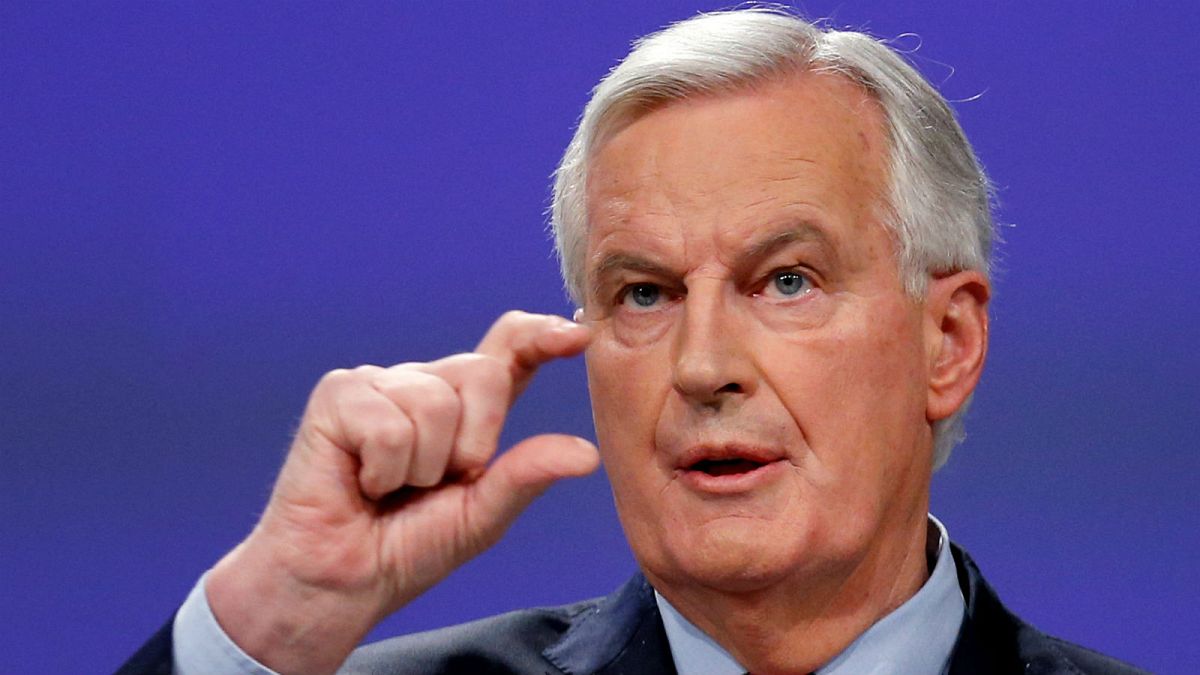The EU today published a 120-page draft text on how it sees its relations with Britain after Brexit. We've been through it so you don't have to.
Irish border
The EU text calls for a “common regulatory area” between Northern Ireland and its southern neighbours in order to avoid a hard border between the two jurisdictions.
However, this would effectively keep Northern Ireland in the customs union maintaining the free flow of goods and services between north and south.
Brussels acknowledges other possibilities are still on the table and says having a common regulatory area would be a fall-back option if nothing better is found.
British Prime Minister Theresa May has always insisted the UK would leave the customs union and said the EU proposal would threaten the constitutional integrity of the country.
The Democratic Unionist Party (DUP) in Northern Ireland — who are traditionally loyal to Westminster — are strongly opposed to regulatory alignment between the north and south if this means border checks in the Irish Sea. The DUP are a powerful bunch — its small band of MPs give May’s government a majority in parliament.
The text on the Irish border has received the greatest backlash as some argued the EU was undermining the UK's sovereignty.
Opposition Labour leader Jeremy Corbyn also laid out his party's proposal for a new UK-EU customs union during a speech in Coventry at the start of the week, leading his opponents to hit back.
However, others, including Irish foreign minister Simon Coveney, tweeted that the legal draft was in line with the agreement reached between Brussels and the UK in December. At the time, both sides signed up to a text that spelt out continued "regulatory alignment" between Northern Ireland and the Republic of Ireland. But it also said that the UK would have a coherent internal market, meaning no customs border in the Irish Sea, after the DUP threatened to pull the plug on the deal.
Transition period
The draft agreement says the transition period — which was requested by the UK to allow businesses time to adapt to being outside the European Union — will run out on December 31, 2020.
Brussels says this date keeps Britain happy, because it want a two-year adjustment period post-Brexit, and neatly coincides with the end of the EU’s current budget period, which runs from 2014-2020.
It adds however that no final decision has yet been taken over whether there will actually be a transitional phase.
Citizens’ rights
British nationals or those of the bloc’s other 27 countries will have the right to stay where they are post-Brexit.
So British citizens living in Spain will be able to continue residing there, as will EU27 citizens who are already living in the UK.
Both groups will also have the right to permanent residence if they have lived in that country for at least five years.
The text however does nothing to allay the fears of British citizens currently living elsewhere in the EU, who fear they will lose their freedom of movement rights.
The European Court of Justice
The EU text says the European Court of Justice would continue to be the arbiter of disputes involving the UK during the transition period.
This means it could rule on disagreements involving the terms of withdrawal or EU citizens’ rights post-Brexit.
EU budget
Brussels says the United Kingdom will have to continue paying into the EU budget during the transition period.
It will also have to cough up for its share in liabilities Brussels has such as “pensions and benefits” of EU employees recruited while the UK was still a member of the bloc. This bill will become payable when Britain finally does leave the union.


